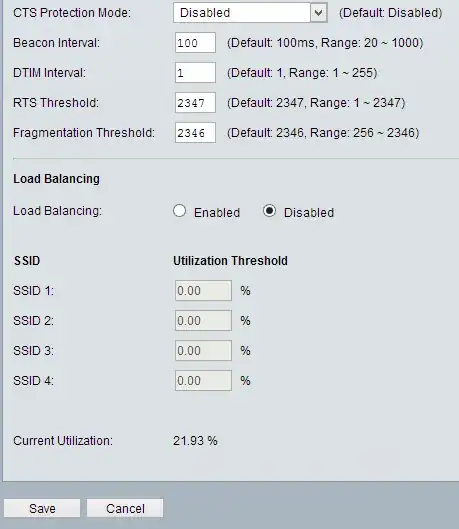I have a Cisco WAP4410N AP device.
Since yesterday, it is supposed to serve a network of about 15 (max 20) clients at the same time, but not all clients will be using bandwidth simultaneously, since it's a mixed network of notebooks/tablets/smartphones. It is configured to work in B/G mode (instead of default B/G/N) because it appeares to have a stronger signal that way.
Somewhere in settings (Wireless > Advanced Settings), there is a following screen:

Note the "Load Balancing" section above. Embedded help page says this:
Load Balancing
Load balancing enables the access point to reject any newer wireless client to associate when the utilization reaches the configured threshold. If you do not want it, select Disabled.
Administration manual makes it a little bit clearer what's the intended use for this feature:

First question: In which scenario would it make sense to load balance clients between SSID's emitted from same AP? From my understanding of wireless networks, a single AP would become saturated with max 25 clients, and in my mind, it is pointless to load balance on the same device, all while sharing same channel and BSSID. Please someone correct me if I'm wrong.
(I'll try to sneak in two more related question, if anyone is able to answer them, so I don't repeat similar questions.)
Second (sub)question: Manual says that "utilization" is actually current CPU utilization of the unit. Does it mean that if utilization is near 100% most of the time, unit is becoming saturated and is working sub-optimally? It's weird to me that a single AP unit (and a quite pricey one at that!) would get to 100% utilization with some 10-15 clients...?
Third (sub)question: Is capacity of AP to handle more clients going to improve when N-mode is disabled (the way I did), and AP is set to work in G (or mixed B/G) mode?